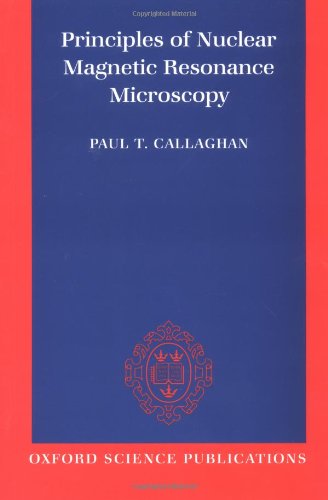Principles of Nuclear Magnetic Resonance Microscopy pdf free
Par brenner lisa le mardi, décembre 22 2015, 23:46 - Lien permanent
Principles of Nuclear Magnetic Resonance Microscopy. Paul Callaghan

Principles.of.Nuclear.Magnetic.Resonance.Microscopy.pdf
ISBN: 0198539444,9780198539445 | 512 pages | 13 Mb

Principles of Nuclear Magnetic Resonance Microscopy Paul Callaghan
Publisher: Oxford University Press, USA
This work, focusing on cell metabolism, led Damadian to believe that there should be a way to detect cancerous cells through chemical analysis rather than by relying on direct visualization under a microscope. �Nuclear magnetic resonance is a key technology for determining the structure of molecules and for visualising the anatomy of living tissue and microscopic structure. Force-detected nuclear magnetic resonance: recent advances and future challenges. Principles of Nuclear Magnetic Resonance Microscopy. NMR Imaging and Its Application to Clinical MedicineThe idea of using a magnetic gradient to introduce spatial information into signals from an NMR spectrometer, which can then be converted to an actu… Hébergé par OverBlog. 4Center for Magnetic Resonance Research, Department of Radiology, University of Minnesota Medical School, 2021 Sixth Street SE, Minneapolis, MN 55455, USA 5Department of Electrical and Computer Engineering, University of Minnesota, 200 Union Street SE, P. (1994) Principles of Nuclear Magnetic Resonance Microscopy, Oxford University Press. Nuclear magnetic resonance imaging is best known for its spectacular use in medical tomography. Nuclear magnetic resonances in the presence of magnetic field gradients have been studied extensively in connection with magnetic resonance imaging 1 . It has helped revolutionise “The NMR operates under the same principles as magnetic resonance imaging (MRI, which many patients experience as part of modern medical procedures) but is powered by a superconductor and has a magnetic field 400,000 times stronger than the Earth's magnetic field. Callaghan, Principles of Nuclear Magnetic Resonance Microscopy, Clarendon, Oxford, UK, 1991. We review recent efforts to detect small numbers of nuclear spins using magnetic resonance force microscopy.
Media and Society: Critical Perspectives book